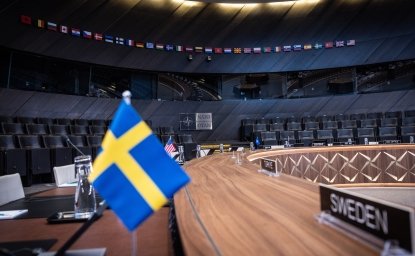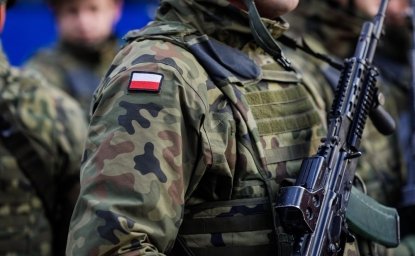Anyone who has been tracking the last few years of NATO Summit Communiques will not be surprised to see that this year's declaration emphasizes climate and energy security. The declaration reaffirms NATO's commitment to becoming the leading international organization in understanding and adapting to the impacts of climate change and extreme weather on security.
NATO’s focus on climate change didn’t happen overnight. While the Alliance has acknowledged environmental challenges for decades, under Secretary General Stoltenberg’s leadership, the last few years have seen heightened recognition of the security threats posed by climate change and concrete actions to address these risks.
As the Norwegian Prime Minister said last week, people live in the physical world, and the physical world is changing. The last 12 months have been the hottest on record. In 2022, between 60,000 and 70,000 excess deaths were linked to extreme heatwaves in Europe.
Floods and wildfires have devastated large parts of Europe and North America in recent years. The Canadian Defense Minister noted that Canada lost more than 17 million hectares of forests to wildfires last year—that’s three times the total burns the country has experienced in all of its recorded history. In Slovenia, flash floods last summer caused 10 billion euros of damage, amounting to about 16% of the country’s GDP.
NATO leaders understand that you can’t separate the risks faced by a country’s citizens from risks to its national security and military readiness. Climate change threatens military operations and infrastructure, influences geopolitical tensions, and overall impacts the alliance’s ability to secure supply chains and maintain stability in key regions.
And, of course, it’s not just about the physical impacts of climate change; it’s also about how our responses to climate change—like the renewable energy transition—connect to security.
NATO has committed to reaching net zero by 2050, an ambitious but necessary goal for energy security. There are practical considerations - military equipment has a long lifespan and diesel is not likely to be cheap in the years to come. Fuel and energy efficiency standards need to be factored into designs today for military readiness in the future.
The green energy transition requires moving a lot of dirt. Critical raw materials are a key ingredient in renewable energy technologies, but also modern weapons systems, so there are real concerns regarding the skyrocketing demand for critical minerals and what it might mean for countries vying for these resources.
So, what is NATO doing? In 2021, NATO launched a Climate Change and Security Action Plan. The plan is really a roadmap for how climate security is being integrated in the very fabric of the Alliance.
Last week, Canada formally launched its NATO Climate Change and Security Center of Excellence, which will focus on developing and sharing knowledge on climate and security across the Alliance. Additionally, NATO published its third climate change and security impact assessment last week, outlining the impact of various climate-related risks on NATO’s strategic environment, military assets, installations, missions, operations, and resilience.
There is skepticism and pushback on NATO’s decision to prioritize climate change, especially amid Russia’s aggression in Ukraine. But the war is also a cautionary tale. In addition to the devastation in Ukraine, the conflict has had profound consequences for energy and food security around the world, and those consequences have been compounded by climate impacts.
Climate change is not a battle to prepare for; it is the context in which battles will be fought. And the points made earlier by Spencer about the importance of European security to US security are relevant to how we think about climate change. Cooperation is critical to building climate resilience. No country or region can succeed on its own. And NATO is positioned to play a unique and critical role.
In a recent interview with the Wilson Center, NATO’s Paul Rushton pointed out that NATO has always adapted to changing conditions. This adaptability is why the Alliance has persisted and thrived for 75 years.
Author


Global Europe Program
The Global Europe Program is focused on Europe’s capabilities, and how it engages on critical global issues. We investigate European approaches to critical global issues. We examine Europe’s relations with Russia and Eurasia, China and the Indo-Pacific, the Middle East and Africa. Our initiatives include “Ukraine in Europe”—an examination of what it will take to make Ukraine’s European future a reality. But we also examine the role of NATO, the European Union and the OSCE, Europe’s energy security, transatlantic trade disputes, and challenges to democracy. The Global Europe Program’s staff, scholars-in-residence, and Global Fellows participate in seminars, policy study groups, and international conferences to provide analytical recommendations to policy makers and the media. Read more


Environmental Change and Security Program
The Environmental Change and Security Program (ECSP) explores the connections between environmental change, health, and population dynamics and their links to conflict, human insecurity, and foreign policy. Read more

Explore More
Browse Insights & Analysis
Trump Speaks with Putin in Effort to End Russia-Ukraine War

From Partner to Ally: Sweden’s First Year in NATO

“Security, Europe!”: Poland's Rise as NATO's Defense Spending Leader



